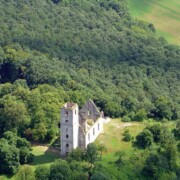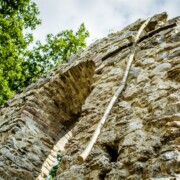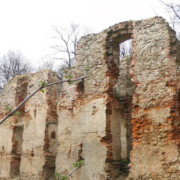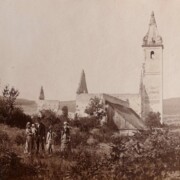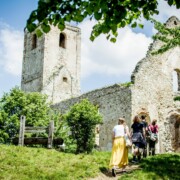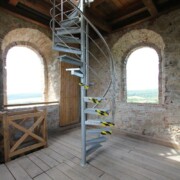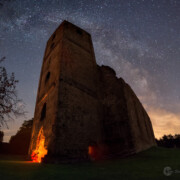Katarínka is the name of the ruin of St. Catherine’s Church that was once part of St. Catherine’s Monastery dedicated to St. Catherine of Alexandria. This is the reason why nowadays this place is called Katarínka – “Little Catherine”
Katarínka is situated in the forests of the Little Carpathian Mountains in south-western Slovakia. The area belongs to the land register of the village of Dechtice lying 20 km north-west from the ancient town of Trnava, the central part of the Trnava Region.
More about the location you can find in article Katarínka, where is it?
The monastery, which used to belong to the Franciscan order, was established in 1618 at place where, according to legends, St. Catherine of Alexandria had appeared to young nobleman – a later hermit Ján Apponyi. Buildings were built there in the early baroque style with late gothic elements. The Italian architect Pietro Spazzo probably took part in this interesting creation.
Katarínka used to be a place where monks lived their busy but peaceful lives and where pilgrims from the near and wide surroundings made pilgrimages. In the 17th century, it was damaged by several Turkish invasions and imperial armies, but it was repaired each time and the life continued here. Anyway, it was not the armies, but politics that succeeded – the monastery was closed down due to the reform of Emperor Joseph II in July 1786. Monks had to abandon the place and the inventory was distributed to the surrounding villages or monasteries. Since those days, when its interesting and tempestuous history seemed to reach its ending, St. Catherine’s Monastery has been gradually turning into a ruin.
Nowadays, the ruin of the church with a tower and relicts of a part of the monastery building are well-preserved. Katarínka lies outside main roads and important touristic routes. This helped to keep it in quite a good condition (the tower and the walls of the church are still standing even after 200 years of dilapidation), but on the other hand, the monastery stayed hidden from the attention of the majority of historians and art historians. Nevertheless, every visitor is charmed by the beauty, dignity and the special atmosphere of this majestic ruin – a few-hundred-year-old stones covered by the silence of the forest wilderness.
If you are still reading, then you are probably interested in how the history of Katarínka continues…and what does project Katarínka mean.


